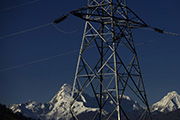Climate Photo of the Week
Four years after the BP Gulf oil spill loss and effects remain, but disappearance of Delta land and marsh is an ongoing catastrophe.
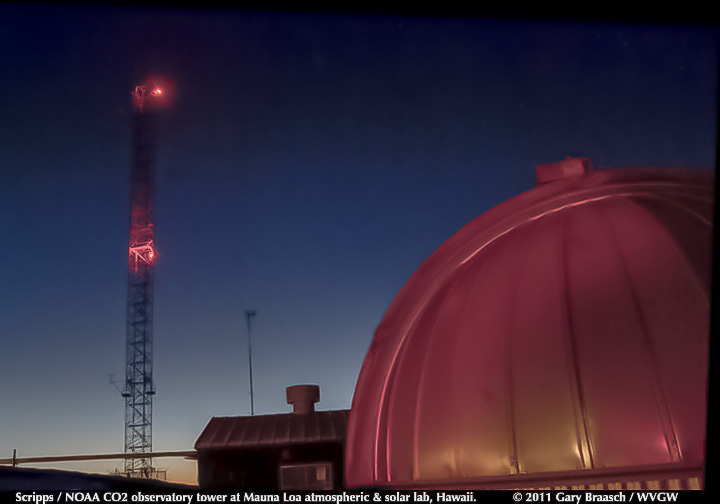
The concentration of carbon dioxide in the atmosphere exceeded 400 parts per million (ppm) for the entire first week of April this year, the first sustained day-after-day period of this high level of the greenhouse gas. CO2, which causes more than 60 percent of global warming, has not been above 400 ppm for more than 800,000 years and probably not for about 3 million years. The 400 ppm mark was first reached briefly in May 2013, but this year that level was surpassed for a few days beginning March 12, "nearly two months earlier than the date on which the milestone was passed in 2013" according to the Scripps Institute of Oceanography which measures CO2 with NOAA.
The current weekly average level is 401.25 ppm, more than two ppm higher than a year ago. This unrelenting rise in greenhouse gases (GHG) from the burning of fossil fuels around the world has just been documented again by the United Nations Intergovernmental Panel on Climate Change (IPCC), based on measurements through 2010. "Total anthropogenic GHG emissions have risen more rapidly from 2000 to 2010 than in the previous three decades," said the latest Assessment Report. "... GHG emissions were the highest in human history from 2000 to 2010." In the details of this part of the IPCC report, released in mid April, are insights that primary human activities -- energy production, industry, transportation, agriculture and forestry -- are the main sources of greenhouse gases, and that overwhelmingly these emissions come from the more wealthy of earth's inhabitants and a very small number of nations. China now causes one-quarter of the world's greenhouse emissions, and the U.S. 17 percent, with India, Russia and Japan joining to make a total of nearly 60 percent of all current GHGs. But looking at the entire industrial age since the 18th C, the U.S. is responsible for about 28 percent of all emissions from energy and industry.
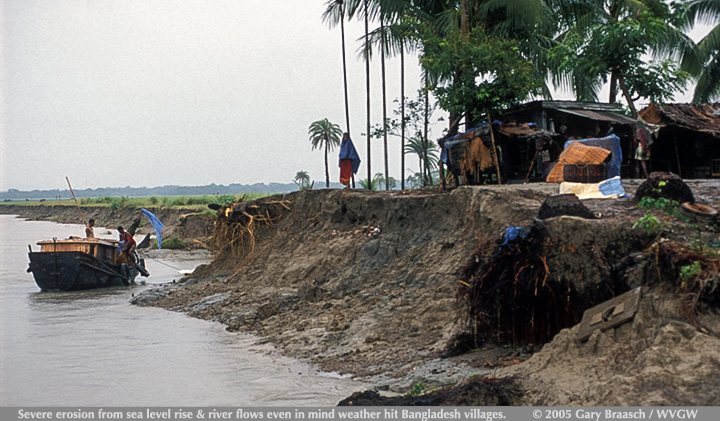
The dire effects of the steady rise in CO2 on people and the ecosystems they depend on are documented in the new United Nations Intergovernmental Panel on Climate Change (IPCC) Fifth Assessment Report, "Climate Change 2014," published this spring. The report's language and stark warnings reflect scientists' increasing high confidence that climate change from human made changes to the atmosphere and oceans is powerfully increasing and affecting more and more people -- especially the poor and disadvantaged. The part of the report about Impacts, Adaptation, and Vulnerability strongly shows how climate change exacerbates the many other problems that people face world-wide, such as food shortages, governmental disfunction, and poor housing.
"Differences in vulnerability and exposure" the IPCC's Summary for Policymakers said, means that "people who are socially, economically, culturally, politically, institutionally, or otherwise marginalized are especially vulnerable to climate change. ... This heightened vulnerability is rarely due to a single cause. Rather, it is the product of intersecting social processes that result in inequalities in socioeconomic status and income, as well as in exposure. Such social processes include, for example, discrimination on the basis of gender, class, ethnicity, age, and (dis)ability."
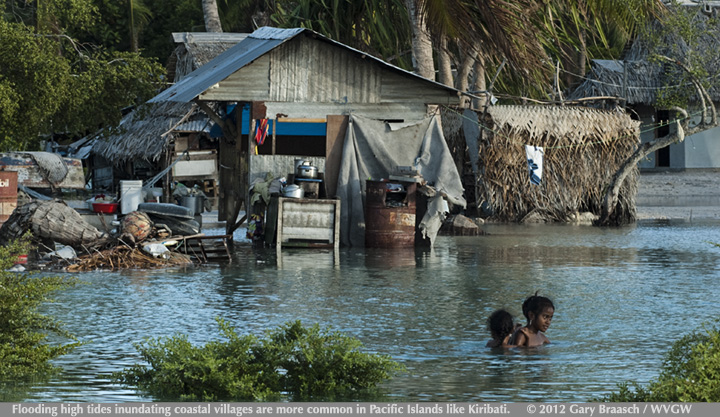
"Impacts from recent climate-related extremes, such as heat waves, droughts, floods, cyclones, and wildfires, reveal significant vulnerability and exposure of some ecosystems and many human systems to current climate variability. ... Climate-related hazards affect poor people’s lives directly through impacts on livelihoods, reductions in crop yields, or destruction of homes and indirectly through, for example, increased food prices and food insecurity." The report lists "climate-related extremes ... alteration of ecosystems, disruption of food production and water supply, damage to infrastructure and settlements, morbidity and mortality, and consequences for mental health and human well-being." This Working Group II report on impacts and vulnerability was written by more than 300 scientist-authors from 70 nations using results from more than 12,000 peer-reviewed scientific studies.
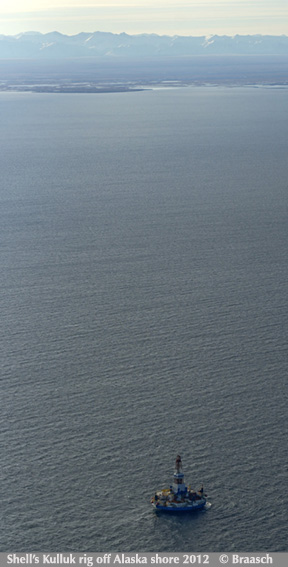
Shell Oil demonstrated "inadequate assessment and management of risks” and “potential evidence of negligent conduct” for the December 2012, grounding of their Alaska oil rig Kulluk near Kodiak, Alaska, according to a U.S. Coast Guard investigative report issued April 3, 2014. The ill-planned and risky move of the rig during the Arctic winter -- in order to avoid taxes, according to the Coast Guard -- was one of many failures in Shell's attempt to drill for oil off Alaska in 2012. The Kulluk was damaged when it ran aground, and the rig has now been scrapped by Shell at a reported loss of $200 million. Earlier in 2012 the Kulluk did preliminary drilling only a few miles off the protected Arctic National Wildlife Refuge. “This kind of behavior should raise major red flags for any future Arctic drilling plans,” said Sen. Edward J. Markey (D-MA) as quoted by the Washington Post. Shell said in January it would not apply for drilling permits in 2014.
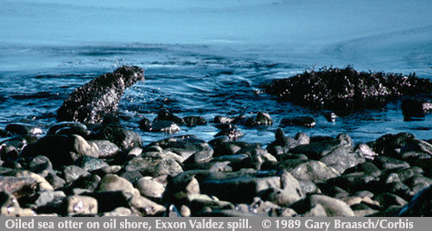
The report on Shell's mistakes and possible negligence came just a few weeks after the 25th anniversary of the Exxon Valdez oil spill in Prince William Sound, Alaska. Gary Braasch reported in 1989 from Valdez and Cordova, Alaska, with photographs published in many magazines via Wheeler Pictures, Zuma Press and Corbis Images.
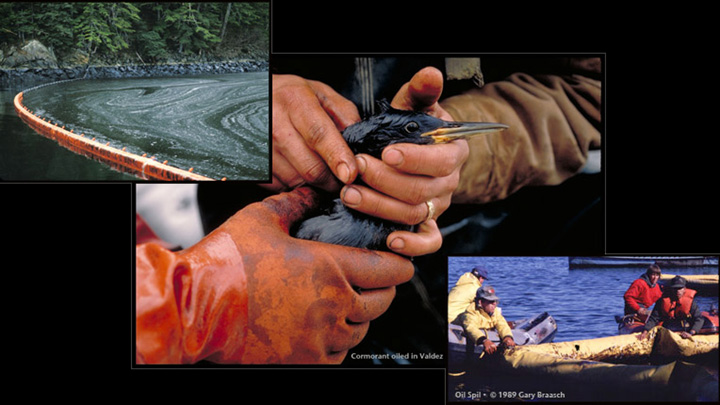

In a special issue, Destruction, art, and the Doomsday Clock, the Bulletin of the Atomic scientists explores how we are influenced for good or ill by the images we see of nuclear proliferation and rapid climate change. Gary Braasch was commissioned to investigate the history and usefulness of the tens of thousands of photographs, charts, graphs, cartoons, illustrations, and moving images that we have seen about global warming. The content of climate imagery falls into several broad categories, Gary writes, and not all of them have been effective in educating people about the dangers and causes of climate change or encouraging civic action and involvement. Documented research and experience shows that a new framing of local climate impacts and positive actions may encourage more people to take action.
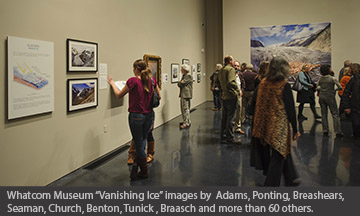
Gary Braasch is honored to be among the artists featured in the exhibition Vanishing Ice: Alpine and Polar Landscapes in Art 1775-2012, at the Whatcom Museum, Bellingham WA. The large show offers a glimpse into the rich cultural legacy of the planet’s frozen frontiers. International in scope, it traces the impact of glaciers, icebergs and fields of ice on artists’ imaginations. Curator Barbara Matilsky chose Gary's set of then and now images of the Athabasca Glacier in Canada for display, along with a science-based caption and copy of gary's book Earth Under Fire.
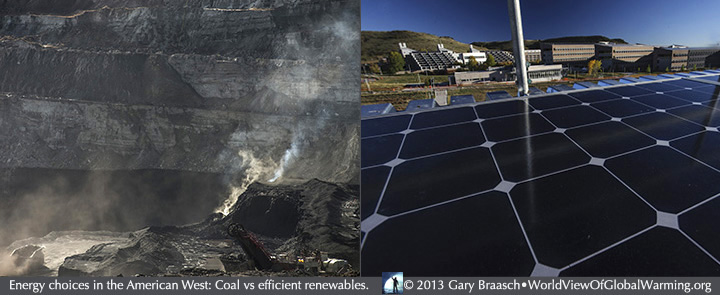
The U.S. government energy policy of "All of the Above" plays out grandly across the Western landscape. It spans from the upper great plains of Montana and North Dakota, where crude oil production was over 900,000 barrels a day in August, and in Wyoming where coal mining provided most of the US supply -- across to Oregon and Washington's Columbia River where hydropower has been created since the 1930s but wind is a major energy source now. World View of Global Warming's detailed photo story about the Powder River Basin coal region is the first in a new series on The Daily Climate about western energy today. Thanks to Scientific American and Grist for re-posting this story for their readers.
And look for more on energy and how to be an active, concerned citizen on our Action Pages.
Other recent stories available on World View of Global Warming
A lone scientist reveals the meaning of a melting Arctic Ocean: “You don’t have to care about Arctic seabirds or pack ice,” George Divoky told World View of Global Warming, because the Arctic is not the only place where climate change is causing problems. “Species are struggling to deal with it,” he says, “and we are going to be in the same situation.” Please see story and portfolio here.
In the Pacific Northwest, the oyster industry, with an $84 million yearly value and 3,000 employees, is already seeing and reacting to the effects of unhealthy ocean water.
Story and photos here.
The fabled Himalayan kingdom of Bhutan stands alone among nations for its strong Buddhist faith, Constitutional concern for the happiness of its people, a monarchy that gave up power to establish democracy, its preservation of ecosystem,s and as the only nation to sequester much more carbon than it emits. In recent years, Bhutan, like other Himalayan areas, has seen an increase in landslides due to heavier rains, and some glacial lake outburst floods (GLOFs) as glaciers retreat. Our report from a visit to this unique nation, which faces difficult choices among ecosystems and energy needs, may be seen here.
COPYRIGHT NOTICE:
Photography and text Copyright © 2005 - 2017 (and before) Gary Braasch All rights reserved. Use of photographs in any manner without permission is prohibited by US copyright law. Photography is available for license to publications and other uses. Please contact requestinformation@worldviewofglobalwarming.org. View more of Gary Braasch's photography here.



